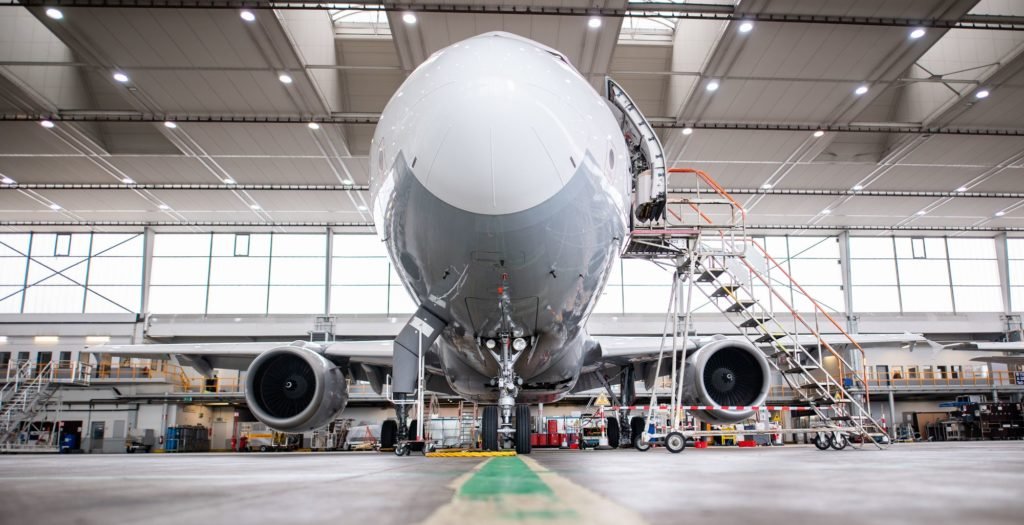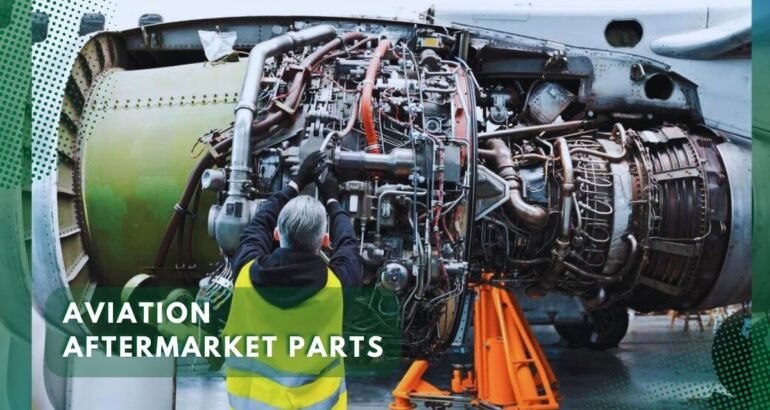In the aviation sector, Aviation Aftermarket Parts is a complex and ever-evolving ecosystem where safety, performance, and reliability requirements govern every operation.
Because of its high importance, we call Aviation Aftermarket Parts the cornerstone of maintaining the continuous and flawless performance of aircraft around the world.
Meemdxb is with you in this article to walk through the comprehensive maintenance processes of these parts and review the strategies for using high-quality aftermarket parts together.
Strategies by which airlines and maintenance providers can significantly increase the lifespan and performance of their fleets. Be with us
The Importance of Aftermarket Parts in the Aviation Industry
It cannot be accepted that aftermarket parts are only for replacing worn-out parts. These parts are used to maintain the highest standards of safety and performance in the aviation sector.
And with the increase in the demand of this industry and its growth, we are facing the aging of the airline fleets, and in increasing the demand for air travel, the importance of these parts cannot be ignored.
The importance of after-sales parts is specified here. Because they provide a cost-effective solution without compromising quality and ensure that airlines can continue to operate efficiently and safely.
In the aviation industry, there is a significant point, and that is that these parts are much more than just replacements for old hardware.
What we would like you to consider is that you see these parts as an opportunity to boost innovation in your fleet.
By choosing components that offer superior performance or compatibility with advanced technologies, airlines can subtly upgrade their aircraft, making them more efficient and competitive.
Types of Aviation Aftermarket Parts
There are many types of aviation aftermarket parts. When it comes to aftermarket parts, there are primarily two types:
Original Equipment Manufacturer (OEM) parts and Parts Manufacturer Approval (PMA) parts. In this section, we discuss two of the most important of them:
OEM parts
OEM parts are produced by the main manufacturer of the aircraft or that specific and desired part. These parts are always preferred by people in the industry due to their guaranteed compatibility and perceived reliability.
PMA parts
PMA parts are manufactured by non-OEM companies but are still certified and certified to meet or exceed the FAA’s exacting safety and performance standards. The important thing about these parts is that that they provide a more affordable alternative while maintaining quality standards.
Quality and Certification
Ensuring the quality of aftermarket parts is extremely important in the aviation industry to ensure safety and reliability, and is reviewed on an ongoing basis by key planners. It is therefore very important to ensure the quality of aftermarket parts, which includes rigorous testing and certification processes.
Certification Processes
In the certification processes, there are two main authorities and supervisors in the certification of aviation parts, which we call the main institutions. These main institutions ensure all the parts and consider strict safety standards before approval.
Federal Aviation Administration (FAA) in the United States.
European Union Aviation Safety Agency (EASA).
The Role of FAA and EASA
These regulatory bodies are responsible for the following:
Only parts are approved.
Supervise manufacturers and suppliers of aftermarket parts.
They ensure continuous compliance with safety regulations.
The Market for Aviation Aftermarket Parts
The current trends in the aftermarket parts industry are moving towards digitalization, and this can be considered a positive thing because it brings about an increasing emphasis on sustainability and significant changes.
Other features that digital platforms provide are simplifying the supply chain and making it easier to distribute parts globally. It is good to examine this topic further:
The Impact of Digitalization
Digitization has effects, some of which we have listed below:
Digitization of efficiency in inventory management.
Tracking procurement processes.
Having a significant impact on the outlook for aftermarket parts.
Sustainability in the Aftermarket Sector
Sustainability in the after-sales sector causes an increasing focus on sustainability in the industry, and sustainability in the after-sales sector leads to the renewal and recycling of parts, which means reducing waste and environmental impacts.

Challenges Facing the Aviation Aftermarket Parts Industry
Challenges in the aviation industry are not isolated in this industry. In this section, we will discuss the challenges facing the aviation aftermarket parts industry:
Regulatory Challenges
Regulatory challenges mean navigating the complex network of international regulations with great care and principle.
Ensuring compliance with aeronautical components is one of the most persistent challenges for aftermarket manufacturers and suppliers.
Counterfeit Parts and Their Risks
Counterfeit parts and their risks are considered one of the most important challenges in the aftermarket parts industry. Because of the chain-like operation of the parts, this industry can be severely hit, and it can endanger the integrity of the aircraft operation.

The Future of Aviation Aftermarket Parts
Aftermarket aviation parts have a good future. Because with the increasing progress of this industry, it is possible to grow in this sector as well. These two things contribute to growth:
Technological Advances
The production of additive materials (3D printing) has led this industry to a huge revolution. With
From this, the turnaround times can be made faster and costs can be reduced.
The Role of Big Data and Artificial Intelligence
Big data and artificial intelligence play an important role in predicting component failures, optimizing inventory, and increasing the overall efficiency of the MRO process. And they provide us with comprehensive and complete information about this industry and lead us toward the advancement of science.
How to Navigate the Aviation Aftermarket Parts Landscape
Navigating the aviation aftermarket landscape requires items that we have brought to you.
Choosing the Right Supplier
Choosing an authentic and reliable supplier is one of the most important growth factors. Some factors must be considered in the path of growth. As:
Issuing the certificate.
Quality assurance practices.
Supplier history in the industry.
The Importance of Traceability and Documentation
The importance of tracking and documentation shows itself when you can easily ensure the authenticity and conformity of the parts after the sale.
Ability to identify risks associated with counterfeit parts
Innovations in Logistics and Distribution
Innovation in Logistics and Distribution This section looks at how logistics technologies are advancing. This innovation:
Simplifies the aviation aftermarket supply chain
The role of secret automatic warehouses is examined.
It provides a suitable blockchain for traceability.
It increases the efficiency of drone delivery systems.
FAQs:
Q: What is the difference between certified and uncertified aftermarket parts?
A: Approved after-sales parts are parts that pass the following filters to ensure that the buyer can easily be sure of that part:
•They have received approval from aviation regulatory bodies (FAA or EASA).
• Have complied with official documents.
In contrast, uncertified parts lack these official approvals, which may raise concerns about their reliability and safety. These worries cause many failures.
Q: Can using PMA parts void the warranty of an aircraft?
A: The use of PMA parts does not automatically void the aircraft warranty. However, aircraft owners should take care to check their warranty contracts, as it is always possible that some manufacturers will include clauses specifying the conditions under which the use of PMA parts may affect coverage, affecting the warranty. It is very important to be aware of all the details of this industry.
Q: How do I verify the authenticity of an aftermarket part?
A: Verification of the authenticity of a part after sale includes the following:
• Checking the appropriate certificate and documentation.
• Confirmation of component compliance with regulatory standards.
• Buy parts from reliable suppliers.
• Conduct full reviews.
• Authenticate to ensure quality.
Q: Are there any specific maintenance considerations for aircraft using aftermarket parts?
A: Aircraft using aftermarket parts may require special maintenance considerations to ensure compatibility and optimal performance.
One of these considerations is to follow the manufacturer’s installation and maintenance instructions.
Regular inspections and adherence to recommended maintenance schedules are essential practices to maintain aircraft integrity and safety when using aftermarket parts.
Q: What role does sustainability play in the aviation aftermarket parts industry?
A: In the aviation aftermarket industry, sustainability is becoming increasingly important and focuses on:
• Reducing environmental impact through recycling initiatives.
• Efficient use of resources and environmentally friendly production processes.
With the effective use of sustainable practices, you can achieve the following:
• Help protect the environment.
• Providing low operating costs.
• Supporting the industry’s move towards greener alternatives.
Q: What future technologies are expected to influence the aviation aftermarket parts industry?
A: The following emerging technologies could significantly impact the aviation aftermarket industry. As :
• Additive manufacturing. (3D printing)
• Blockchain to increase traceability.
• Predictive maintenance based on artificial intelligence.
The effect of these technologies is that these technologies lead to increased efficiency, reduced costs, and increased sustainability.
Conclusion
Aviation Aftermarket Parts is at a pivotal moment in the aviation industry and is grappling with multifaceted challenges.
The good news is that Aviation Aftermarket Parts is on the verge of a revolutionary leap forward, driven by advanced technological advancements and a commitment to sustainability.
As you’ve been with meemsdxb, you’ve seen the industry transform with the integration of digital technologies like blockchain to increase traceability, additive manufacturing to produce parts on demand and AI-powered predictive maintenance, all heralding a new era. It assures efficiency and capability, it is emphasized.
It is good to create a good and correct path for yourself by being aware and vigilant in choosing stakeholders in the aviation sector.
Resources:
Federal Aviation Administration (FAA) Website
Aerospace Industries Association (AIA)
Aviation Week Network
MRO Network
Sustainable Sky Institute
the Aviation Suppliers Association (ASA)

What are the main types of aviation aftermarket parts?
There are primarily two types of aviation aftermarket parts: Original Equipment Manufacturer (OEM) parts and Parts Manufacturer Approval (PMA) parts. OEM parts are made by the original aircraft or component manufacturer, offering guaranteed compatibility and reliability. PMA parts, on the other hand, are produced by third-party companies but are certified to meet or exceed the Federal Aviation Administration (FAA)’s safety and performance standards, providing a cost-effective alternative without compromising quality.
It could be many parts like ACU, FCU, Bolts, and more. There is no specific part which is aftermarket as everything can be retreated or serviced to be used again in the Aviation industry.
How do regulatory bodies like the FAA and EASA impact the aviation aftermarket parts industry?
The Federal Aviation Administration (FAA) in the United States and the European Union Aviation Safety Agency (EASA) play crucial roles in the aviation aftermarket parts industry by approving parts, supervising manufacturers and suppliers, and ensuring continuous compliance with safety regulations. These regulatory bodies set strict safety standards that all parts must meet before they are approved for use, thereby maintaining high levels of safety and reliability in the aviation sector.
What challenges does the aviation aftermarket parts industry face?
The industry faces several challenges, including navigating complex international regulations, ensuring compliance with aeronautical components, and the risk of counterfeit parts. Counterfeit parts pose significant safety risks and can compromise the integrity of aircraft operations, making it crucial for suppliers and manufacturers to ensure the authenticity and quality of their parts.
What role does sustainability play in the aviation aftermarket parts industry?
Sustainability is becoming increasingly important in the aviation aftermarket parts industry, focusing on reducing environmental impact through recycling initiatives, efficient use of resources, and environmentally friendly production processes. Sustainable practices help protect the environment, lower operating costs, and support the industry’s shift towards greener alternatives.